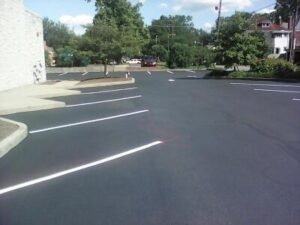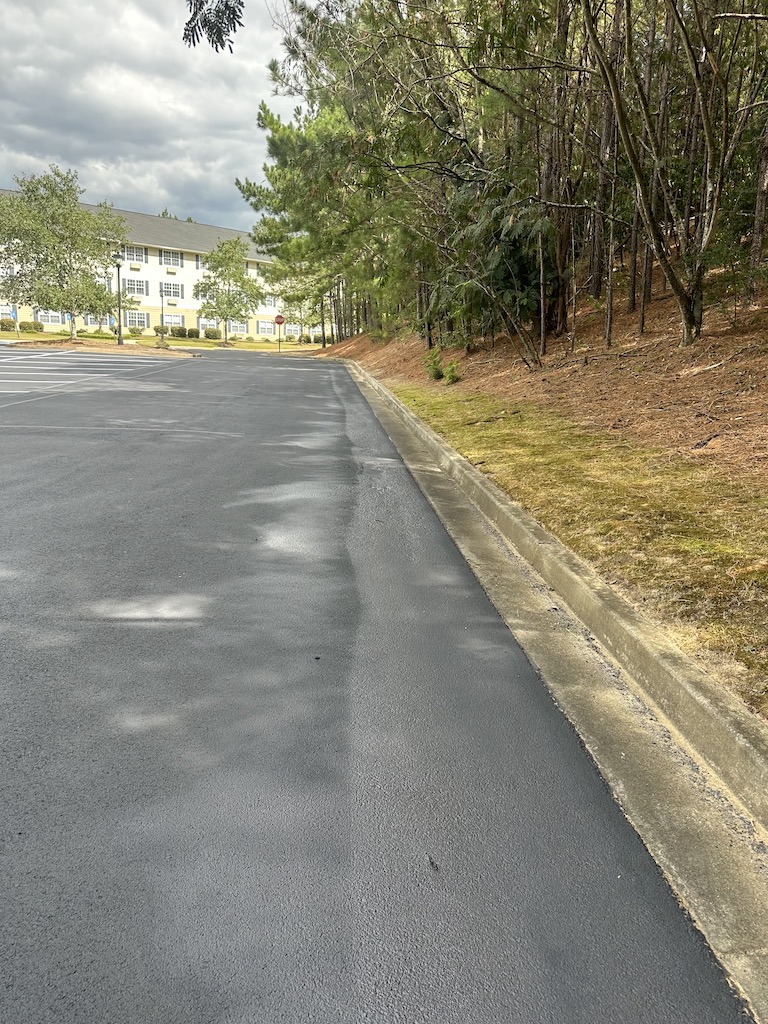
What Are the Preliminary Steps for Sealcoating an Asphalt Pavement?
It is a common misconception that asphalt sealcoating contractors need to do little more than sweep the pavement before they cover it with a thick layer of seal coat. In reality, asphalt sealcoating contractors must complete several preliminary steps before they carefully apply a sealant. Some of the preliminary steps can be completed well in advance of the application, but other steps need to wait until the day of or the day before the sealant is to be applied. The preliminary steps include the items on the following list.
1. Carefully evaluate the condition of the pavement to identify damage that will need to be repaired. Asphalt sealcoating should not be confused with asphalt crack sealing, which is a repair method that closes pavement cracks to prevent water penetration and to stop the cracks from growing. Contractors will also look for unusual wear patterns, signs of drainage problems, and the presence of packed dirt, puddles of oil, and intruding vegetation.
2. The pavement will need to be rigorously cleaned, and grass or weeds near the pavement’s edges will need to be trimmed.
3. Alligatored patches, potholes, and cracks will need to be repaired. You will need to ask your contractor how much time will need to elapse between the repair and the sealant application.
4. Your contractor will recommend the appropriate sealant mix for your pavement, which may or may not include the use of an additive. If your pavement would benefit from a type of sealant that the contractor does not normally stock, your product will be ordered specifically for your job.
5. Since sealants obscure line striping and pavement markings, many asphalt parking lot sealcoating contractors also offer parking lot painting services. Be sure to ask your asphalt parking lot sealcoating contractor about striping and marking your lot. In many cases, bundling those services can allow your lot to be reopened faster, and it may result in a bill that is less than the total for hiring two different contractors.
6. After collecting the necessary information, your contractor can create a tentative schedule for your job. In the days leading up to your job, the contractor will monitor the weather forecasts. Sealants must be applied to dry pavements, and the ground and air temperatures cannot be less than 50 degrees. If it appears that the weather on the planned date will prevent contractors from delivering high-quality results, they will typically postpone the job, but they can sometimes move your job forward. Therefore, keep the lines of communication between you and your contractor open so that you will be able to react to potential schedule changes.
What Happens During the Actual Coating Application?
Asphalt parking lot sealcoating contractors usually prefer to start work as early as possible, and many of them will not start an application during the afternoon hours unless it is an exceptionally small pavement. If all repairs have been made, these are the steps that contractors typically follow on the day of the application.
1. All equipment, including the prepared sealant mix, sprayers, hand tools, and traffic control devices, must be moved to the job site. Typically, the contractor also provides transportation for the crew members.
2. Barricades or other devices will be placed to prevent pedestrians and vehicles from entering the work area.
3. If necessary, the pavement will be cleaned again. If water is used, the pavement will be allowed to dry.
4. Workers may use hand tools to apply the sealant around the perimeter of the pavement or near sensitive areas.
5. The first coat of sealant will be applied, typically with a sprayer. A second coat will be applied after the first coat has dried sufficiently.
6. The area will remain closed to vehicles for 18 to 24 hours, but it may be possible to allow pedestrian access much sooner.
If you would like to learn more about asphalt sealants or other paving maintenance procedures, feel free to contact the experts at MH Greeson. We offer a wide range of paving services, including asphalt sealcoating, line striping, asphalt crack sealing, traffic signs, asphalt paving and patching, car stops, and bollards. Our many years of experience help us provide every customer with exceptional workmanship and exemplary service at reasonable prices. We offer free quotes, so complete our online form to submit your request. If you prefer to call us, our number is 770-335-2983.




